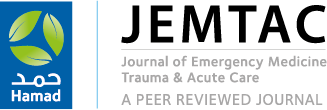-
oa A comprehensive review of research methods in emergency medicine quality and safety
- Source: Journal of Emergency Medicine, Trauma and Acute Care, Volume 2025, Issue 2, May 2025, 19
-
- 17 October 2024
- 10 March 2025
- 23 April 2025
Abstract
Emergency medicine is a fast-paced and decision-making environment, critical where ensuring patient safety and care quality is of utmost importance. This review explores the evolving landscape of research methodologies used to improve safety and quality in emergency care, with a specific focus on studies conducted in India and their global implications. We delve into various research approaches, from observational studies that uncover patterns of errors and adverse outcomes to randomized controlled trials (RCTs) that test interventions aimed at enhancing safety in emergency departments (EDs). Qualitative research provides more in-depth understanding of the human and organizational factors that influence patient care, whereas mixed-methods research combines quantitative data with qualitative insights, offering a comprehensive view of complex safety challenges. Furthermore, implementation science plays a critical role in translating research findings into practice and ensuring the effective adoption of safety protocols in EDs. Despite the limited number of studies in India, the research conducted in the country highlights unique challenges such as overcrowding and resource constraints, making it essential to adapt global research findings to local contexts. By examining these diverse methodologies and their application in India, this review emphasizes the importance of context-specific solutions to enhance patient safety and care quality in resource-limited settings. The findings have global relevance, offering valuable insights for emergency health professionals committed to improving safety in EDs worldwide. This review aims to inspire further research and collaboration to ensure safer, more efficient emergency care for all patients.



